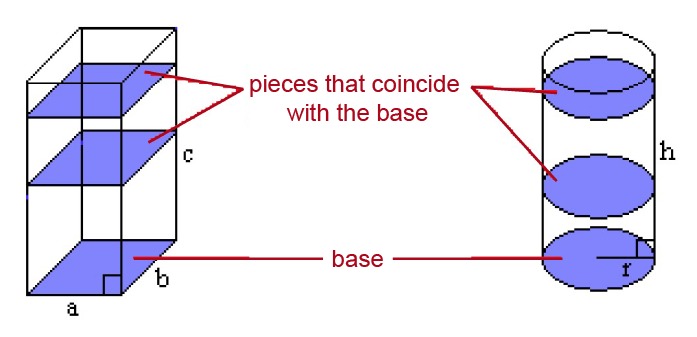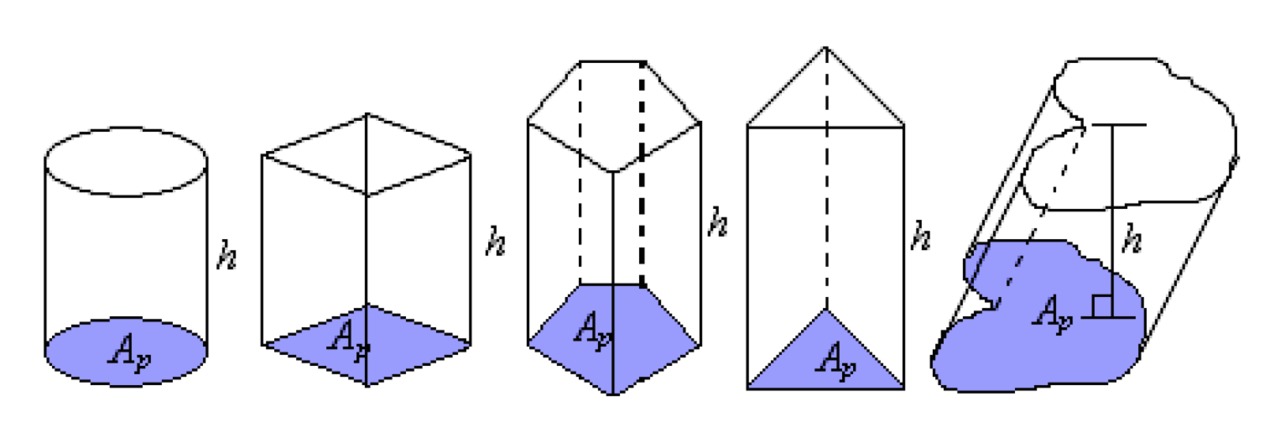10. Cylinder volume
Cylinder volume
Consider objects in the shape of a right polyhedron and a straight circular cylinder. The volume of the object can be thought of as being formed by two-dimensional pieces that coincide with the base.

The measurement accuracy at which the heights of the figures (here [[$ c $]] and [[$ h $]]) are given can be thought of as the thickness of the objects. If the height is given to the nearest centimeter, the objects are one centimeter thick.

The volumes of a cylinder is always calculated in the same way, irrespective of its base shape or whether it is straight or oblique.
The volume of a cylinder is obtained as the product of its base area [[$ A_p $]] and its height [[$ h $]].
[[$$ V = A_ph $$]]
Note! If the cylinder is oblique, the height is the distance from the bottom measured perpendicular to the cylinder head.
Example 1

Calculate the volume of the Leaning Tower of Pisa in Italy. Assume that the tower is the same width throughout. The diameter of the tower's base is [[$ 15.5 $]] m, and its height is [[$ 55.9 $]] m.
The tower is in the shape of a circular cylinder with a base area of [[$ A_p = \pi r^2 $]] and the height [[$ h $]], so the volume can be calculated with the formula [[$ V = \pi r^2h $]].
[[$ \begin{align*} V &= \pi r^2h \\ &= \pi \cdot 7,75 \;\text{m}^2 \cdot 55,9 \;\text {m} \\ &= 10\;547,87... \;\text {m}^3 \\ &≈ 10\;500 \;\text {m}^3 \\ \end{align*} $]]Answer: The volume of the Leaning Tower of Pisa is [[$ 10\;500 \;\text m^3 $]].
If the calculation had been more accurate, what should have been taken into account?
Exercises
Basic exercises
Applied exercises
Challenging exercises
2/10. Submission folders for answers
Sinulla ei ole tarvittavia oikeuksia lähettää mitään.